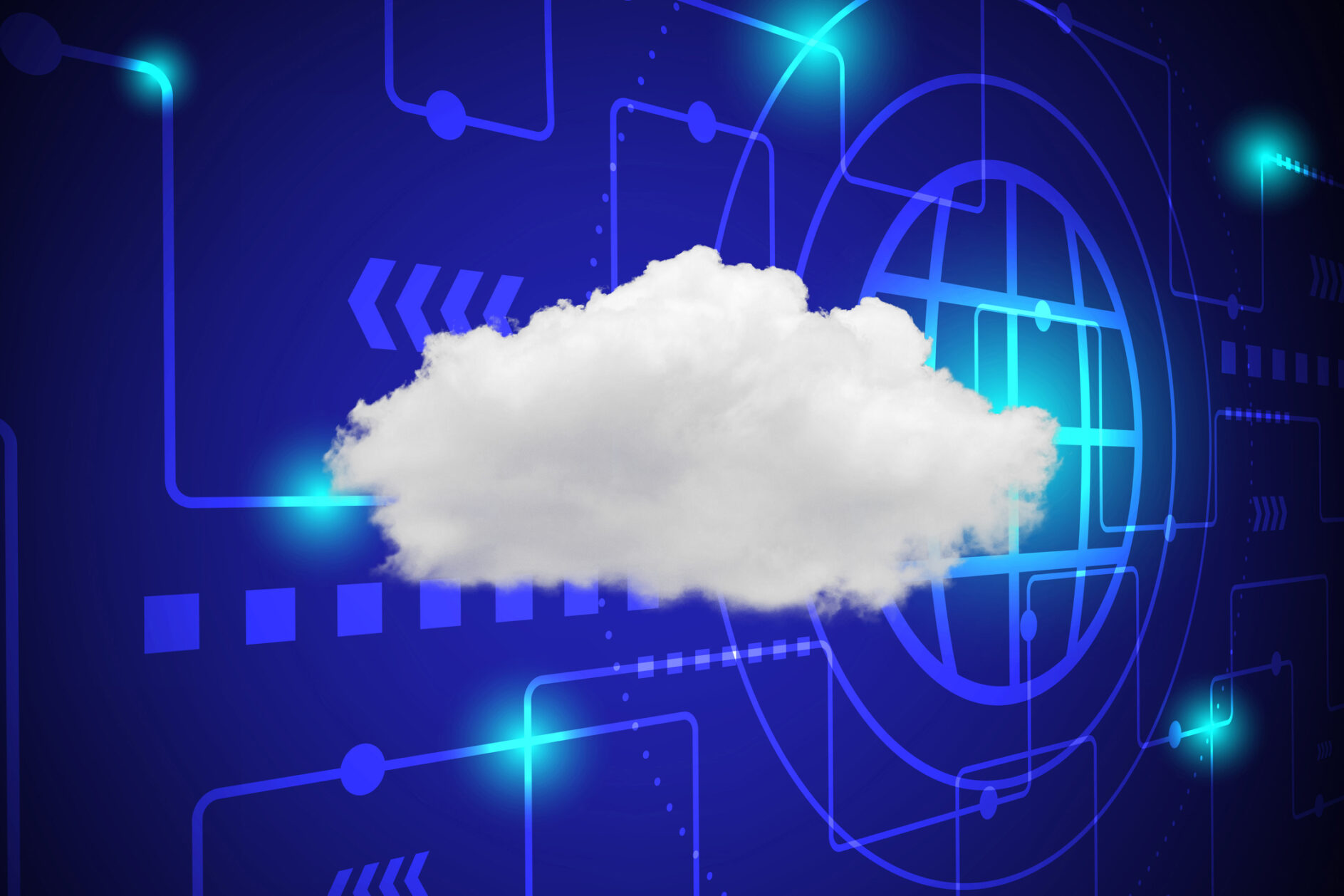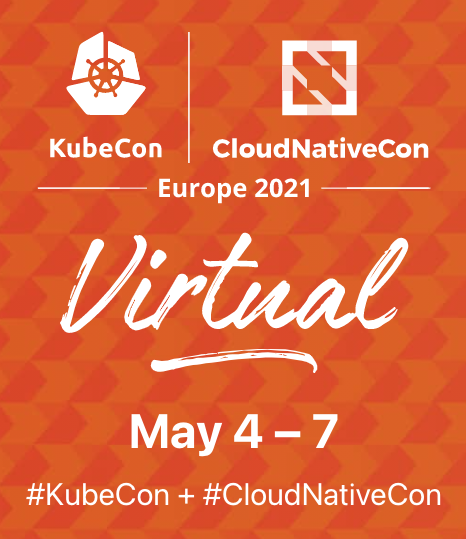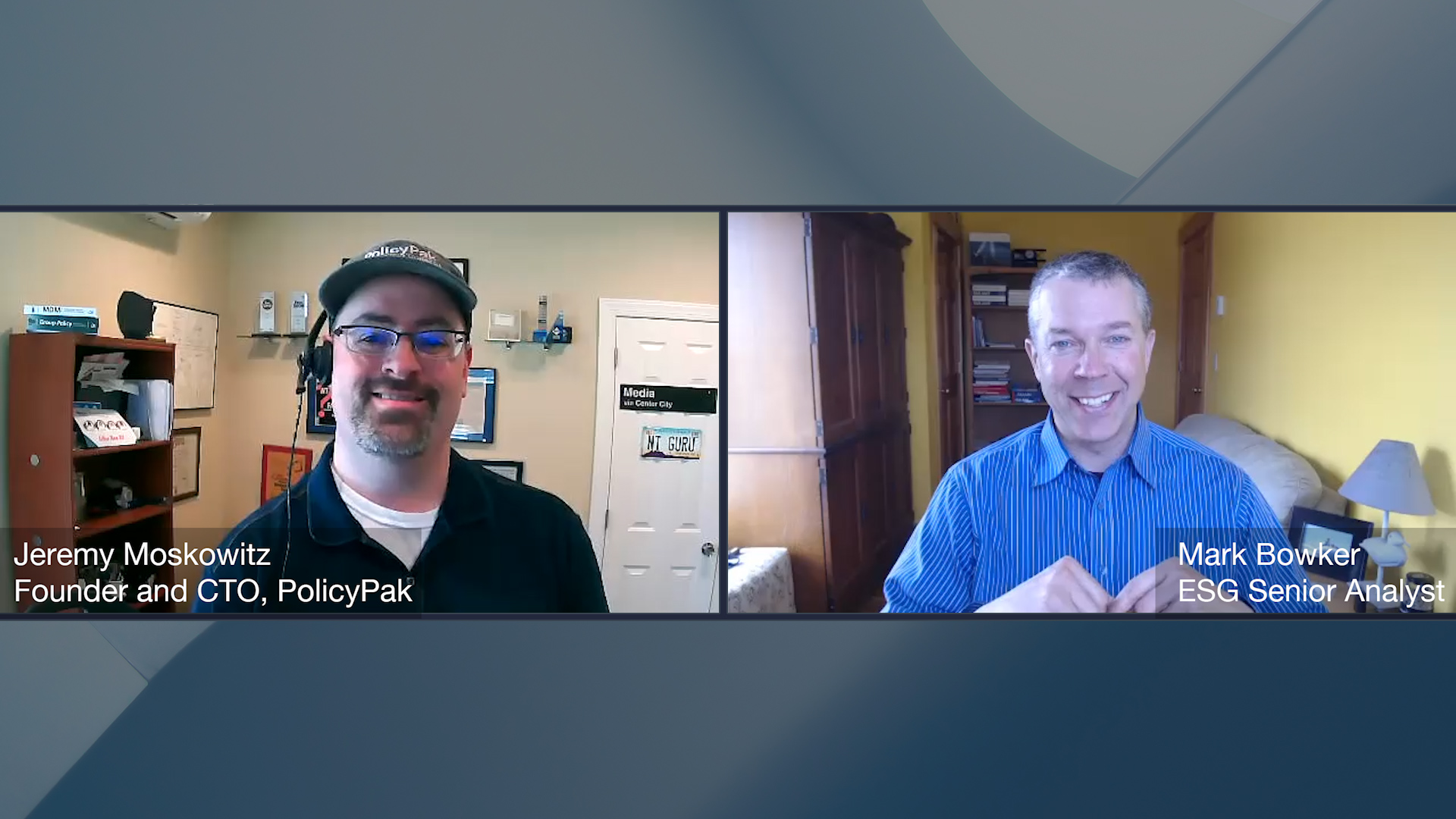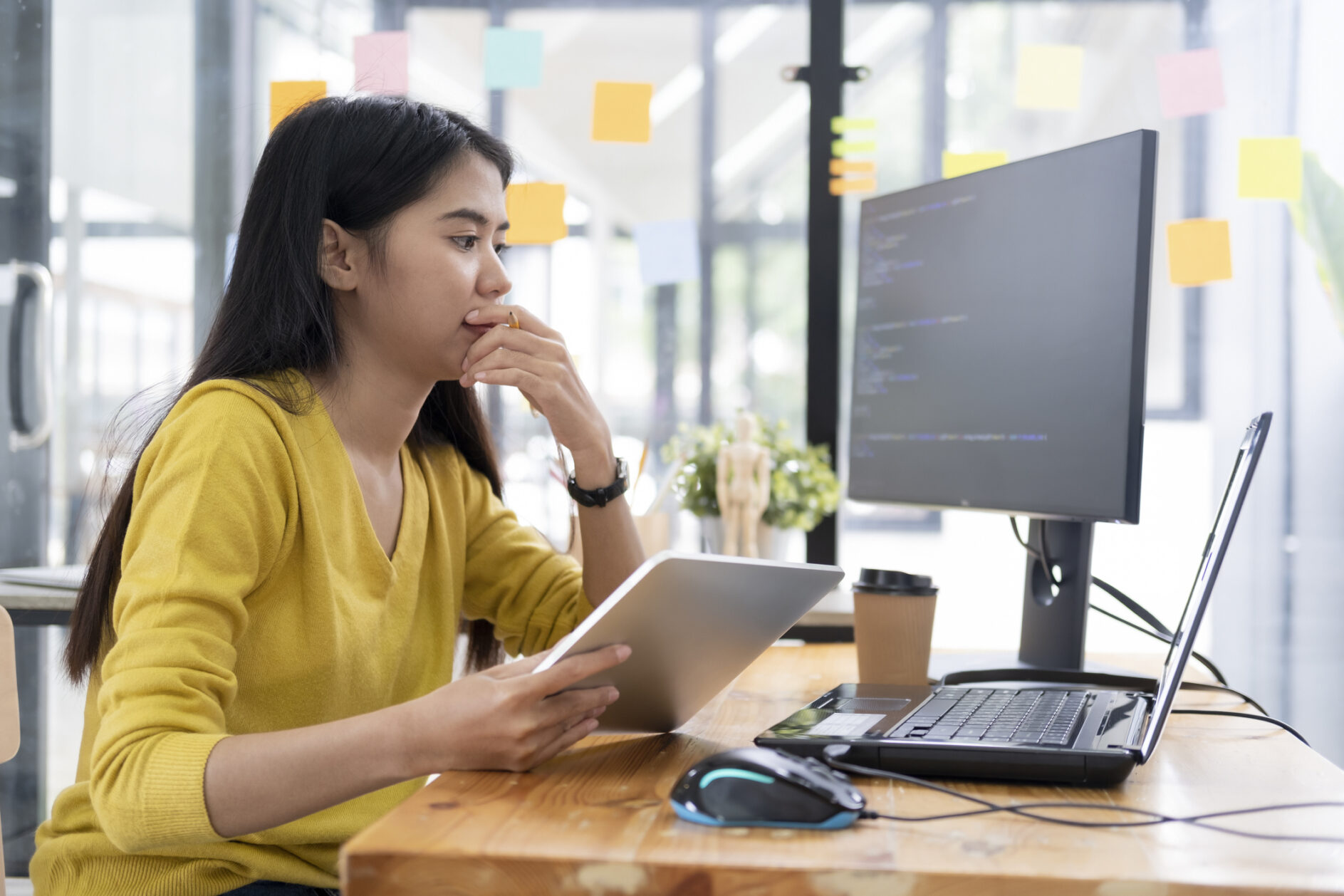 Effectively addressing national emergencies and times of crisis has always required private and public sector collaboration. The most recent and obvious example being the development and delivery of COVID-19 vaccines. And like COVID-19, ransomware attacks cross borders, necessitating a coordinated national and international response by government agencies and technology leaders.
Effectively addressing national emergencies and times of crisis has always required private and public sector collaboration. The most recent and obvious example being the development and delivery of COVID-19 vaccines. And like COVID-19, ransomware attacks cross borders, necessitating a coordinated national and international response by government agencies and technology leaders.
Insight
-
-
This Master Survey Results presentation focuses on organizations in the process of transforming their businesses with artificial intelligence to understand the evolving data storage requirements of the next-generation applications and workloads supporting AI initiatives.
ESG conducted a comprehensive online survey of IT operations professionals from private- and public-sector organizations in North America (United States and Canada) between September 17, 2020 and September 26, 2020. To qualify for this survey, respondents were required to be IT professionals familiar and involved with evaluating, purchasing, and managing storage associated with AI initiatives for their organizations.
-
 2021 is poised to be a transformational year for Dell Technologies, with Dell Technologies APEX playing the lead role. At this year’s Dell Technologies World, Dell announced the availability of what is expected to just be the start of a broad portfolio of managed IT services. Combined with the announced spin off of both VMware and Boomi, Dell Technologies is finding its focus—a focus I expect will lead to benefits for both Dell and its customers, but there is still much to be done.
2021 is poised to be a transformational year for Dell Technologies, with Dell Technologies APEX playing the lead role. At this year’s Dell Technologies World, Dell announced the availability of what is expected to just be the start of a broad portfolio of managed IT services. Combined with the announced spin off of both VMware and Boomi, Dell Technologies is finding its focus—a focus I expect will lead to benefits for both Dell and its customers, but there is still much to be done. -
 The focus at KubeCon + CloudNativeCon Europe 2021 demonstrated that containers and Kubernetes is growing up—fast! The adoption of Kubernetes and its overall business impact, along with how the growth of applications and cloud adoption expands beyond the developer, was a key message at the event. Kubernetes has been ready and is expanding its presence in the overall business ecosystem, with deployments both in the cloud and at the edge.
The focus at KubeCon + CloudNativeCon Europe 2021 demonstrated that containers and Kubernetes is growing up—fast! The adoption of Kubernetes and its overall business impact, along with how the growth of applications and cloud adoption expands beyond the developer, was a key message at the event. Kubernetes has been ready and is expanding its presence in the overall business ecosystem, with deployments both in the cloud and at the edge. -
The composition of cloud-native applications is a mix of APIs, containers, VMs, and serverless functions continuously integrated and delivered. Securing these applications, the underlying infrastructure, and the automation platforms that orchestrate their deployment necessitates revisiting threat models, gaining organizational alignment, and leveraging purposeful controls. Additionally, as security and DevOps continue to converge, cloud security controls are being consolidated. Project teams are evolving from a siloed approach to a unified strategy to securing cloud-native applications and platforms. In parallel, vendors are consolidating cloud security posture management (CSPM), cloud workload protection (CWP), container security, and more into integrated cloud security suites, impacting buyer personas and vendor sales motions.
In order to gain insight into these trends, ESG surveyed 383 IT and cybersecurity professionals at organizations in North America (US and Canada) personally responsible for evaluating or purchasing cloud security technology products and services.
-
Zero trust remains a broad initiative with a wide array of use cases, supporting technologies, and starting points. While it may seem that focus has shifted away from data security in recent years, many organizations consider it a critical component of their zero trust strategy. To address zero trust requirements, data classification and security solutions must support deployment flexibility, risk assessment, automation, and integrations with other solutions.
-
 It’s always good to catch up with Jeremy. We had very similar starts (a story for another blog) to our careers in IT. I’m always impressed with how tuned in Jeremy is with IT professionals and his constant drive to innovate in this digital workspace market.
It’s always good to catch up with Jeremy. We had very similar starts (a story for another blog) to our careers in IT. I’m always impressed with how tuned in Jeremy is with IT professionals and his constant drive to innovate in this digital workspace market. -
 HPE made a big announcement this week on the data storage front, introducing Unified DataOps. At a high level, I am a big supporter of innovation along the lines of what HPE is doing—namely, providing technologies that fuel the transition from buying systems to realizing positive business outcomes. That’s because more and more, I see business leaders trying to achieve two seemingly conflicting goals:
HPE made a big announcement this week on the data storage front, introducing Unified DataOps. At a high level, I am a big supporter of innovation along the lines of what HPE is doing—namely, providing technologies that fuel the transition from buying systems to realizing positive business outcomes. That’s because more and more, I see business leaders trying to achieve two seemingly conflicting goals: -
 As organizations grapple with ongoing data ecosystem complexity, the key question being asked is: how can organizations take back control of their data ecosystem and enable more people to better leverage data that matters to them? I believe it starts with data empowerment for all the key data stakeholders throughout the business, including both experts and generalists alike. Organizations need help in ensuring the right people are empowered to do their jobs more effectively and not get inundated with tasks that fall outside of their job descriptions. While this is true across the entire business from IT and operations teams to business analysts and developers, an area that continues to have a spotlight put on it is the data team, consisting of data engineers, data scientists, and ML engineers.
As organizations grapple with ongoing data ecosystem complexity, the key question being asked is: how can organizations take back control of their data ecosystem and enable more people to better leverage data that matters to them? I believe it starts with data empowerment for all the key data stakeholders throughout the business, including both experts and generalists alike. Organizations need help in ensuring the right people are empowered to do their jobs more effectively and not get inundated with tasks that fall outside of their job descriptions. While this is true across the entire business from IT and operations teams to business analysts and developers, an area that continues to have a spotlight put on it is the data team, consisting of data engineers, data scientists, and ML engineers. -
COVID-19 created an unplanned event for businesses that were forced to quickly enable a mostly—if not exclusively—remote workforce. The business response for remote work has challenged IT business continuity plans, created new risks, and impacted technology decisions. Digital workspaces, bolstered by VDI and DaaS, have the potential to play a vital role in facilitating employee productivity from anywhere in the short term, while helping IT retain insight and control.
ESG conducted an in-depth survey of 389 IT professionals responsible for or involved in the purchase process for productivity applications and endpoint devices, including virtual desktop infrastructure (VDI) and desktop-as-a-service solutions (DaaS). Survey participants represented midmarket (100 to 999 employees) and enterprise-class (1,000 employees or more) organizations in North America (United States and Canada) and Western Europe (UK, France, and Germany).
-
 April showers bring May flowers, and this year’s RSA Conference. Usually there’s one topic at RSA that everyone is talking about but this year there will likely be 3: secure access service edge (SASE), eXtended detection and response (XDR), and zero trust. In my last blog, I described 8 things security executives want to hear about XDR. This one focuses on zero trust.
April showers bring May flowers, and this year’s RSA Conference. Usually there’s one topic at RSA that everyone is talking about but this year there will likely be 3: secure access service edge (SASE), eXtended detection and response (XDR), and zero trust. In my last blog, I described 8 things security executives want to hear about XDR. This one focuses on zero trust. -
The insights that Paul shares regarding testing hosted desktops as part of a digital workspace strike me as an essential requirement as businesses consider scaling their environment beyond what they have ever planned.
I think of Login VSI as the standard for testing hosted desktops and a way IT pros can help predict user experience while deploying at scale with confidence. Listen as Paul and I chat through the digital workspace ecosystem and how Login VSI is helping customers succeed with their strategies.

 2021 is poised to be a transformational year for Dell Technologies, with
2021 is poised to be a transformational year for Dell Technologies, with  The focus at
The focus at  It’s always good to catch up with Jeremy. We had very similar starts (a story for another blog) to our careers in IT. I’m always impressed with how tuned in Jeremy is with IT professionals and his constant drive to innovate in this digital workspace market.
It’s always good to catch up with Jeremy. We had very similar starts (a story for another blog) to our careers in IT. I’m always impressed with how tuned in Jeremy is with IT professionals and his constant drive to innovate in this digital workspace market.  HPE made a big announcement this week on the data storage front, introducing
HPE made a big announcement this week on the data storage front, introducing  As organizations grapple with ongoing data ecosystem complexity, the key question being asked is: how can organizations take back control of their data ecosystem and enable more people to better leverage data that matters to them? I believe it starts with data empowerment for all the key data stakeholders throughout the business, including both experts and generalists alike. Organizations need help in ensuring the right people are empowered to do their jobs more effectively and not get inundated with tasks that fall outside of their job descriptions. While this is true across the entire business from IT and operations teams to business analysts and developers, an area that continues to have a spotlight put on it is the data team, consisting of data engineers, data scientists, and ML engineers.
As organizations grapple with ongoing data ecosystem complexity, the key question being asked is: how can organizations take back control of their data ecosystem and enable more people to better leverage data that matters to them? I believe it starts with data empowerment for all the key data stakeholders throughout the business, including both experts and generalists alike. Organizations need help in ensuring the right people are empowered to do their jobs more effectively and not get inundated with tasks that fall outside of their job descriptions. While this is true across the entire business from IT and operations teams to business analysts and developers, an area that continues to have a spotlight put on it is the data team, consisting of data engineers, data scientists, and ML engineers. April showers bring May flowers, and this year’s RSA Conference. Usually there’s one topic at RSA that everyone is talking about but this year there will likely be 3: secure access service edge (SASE), eXtended detection and response (XDR), and zero trust. In my last
April showers bring May flowers, and this year’s RSA Conference. Usually there’s one topic at RSA that everyone is talking about but this year there will likely be 3: secure access service edge (SASE), eXtended detection and response (XDR), and zero trust. In my last